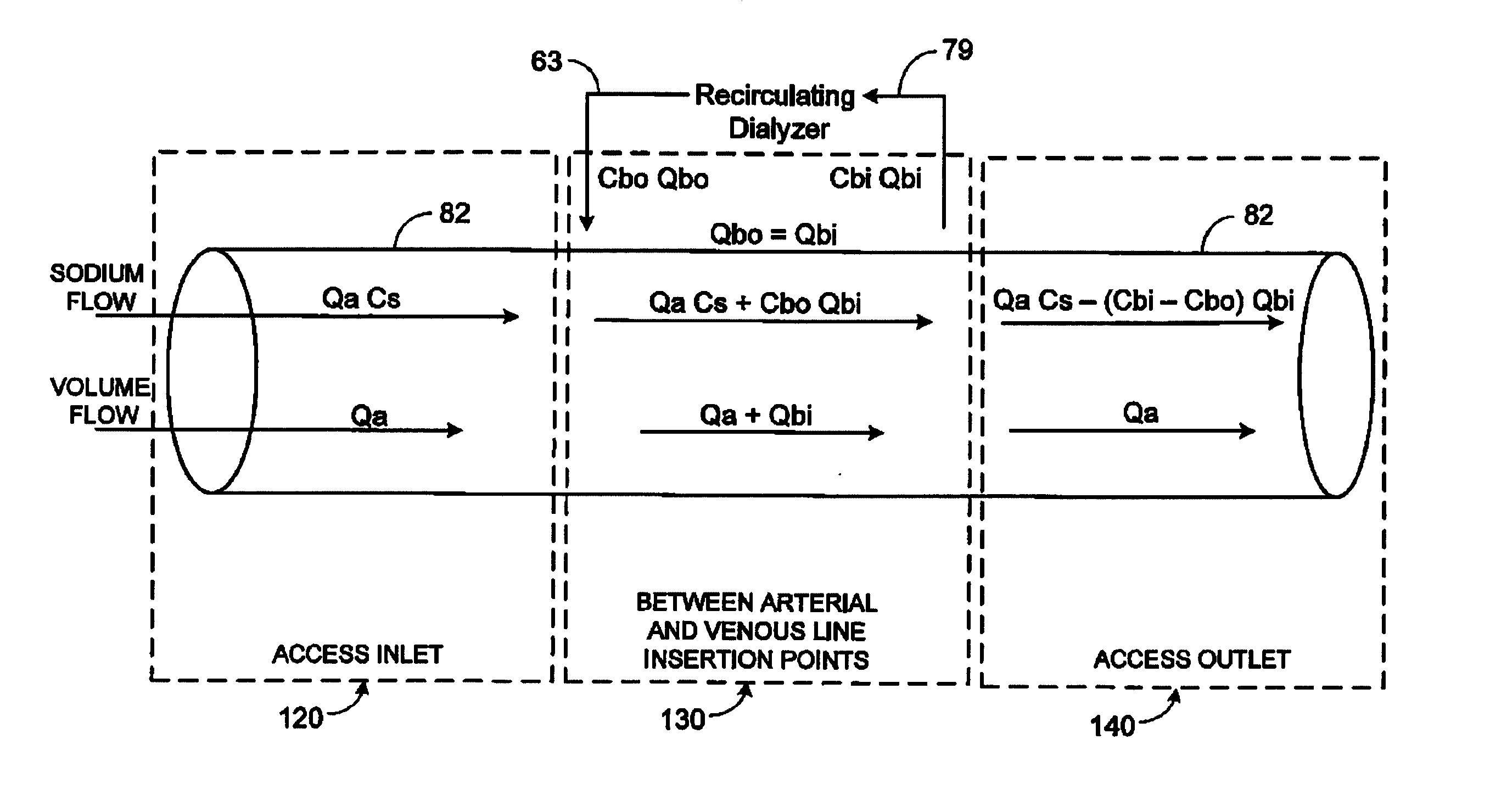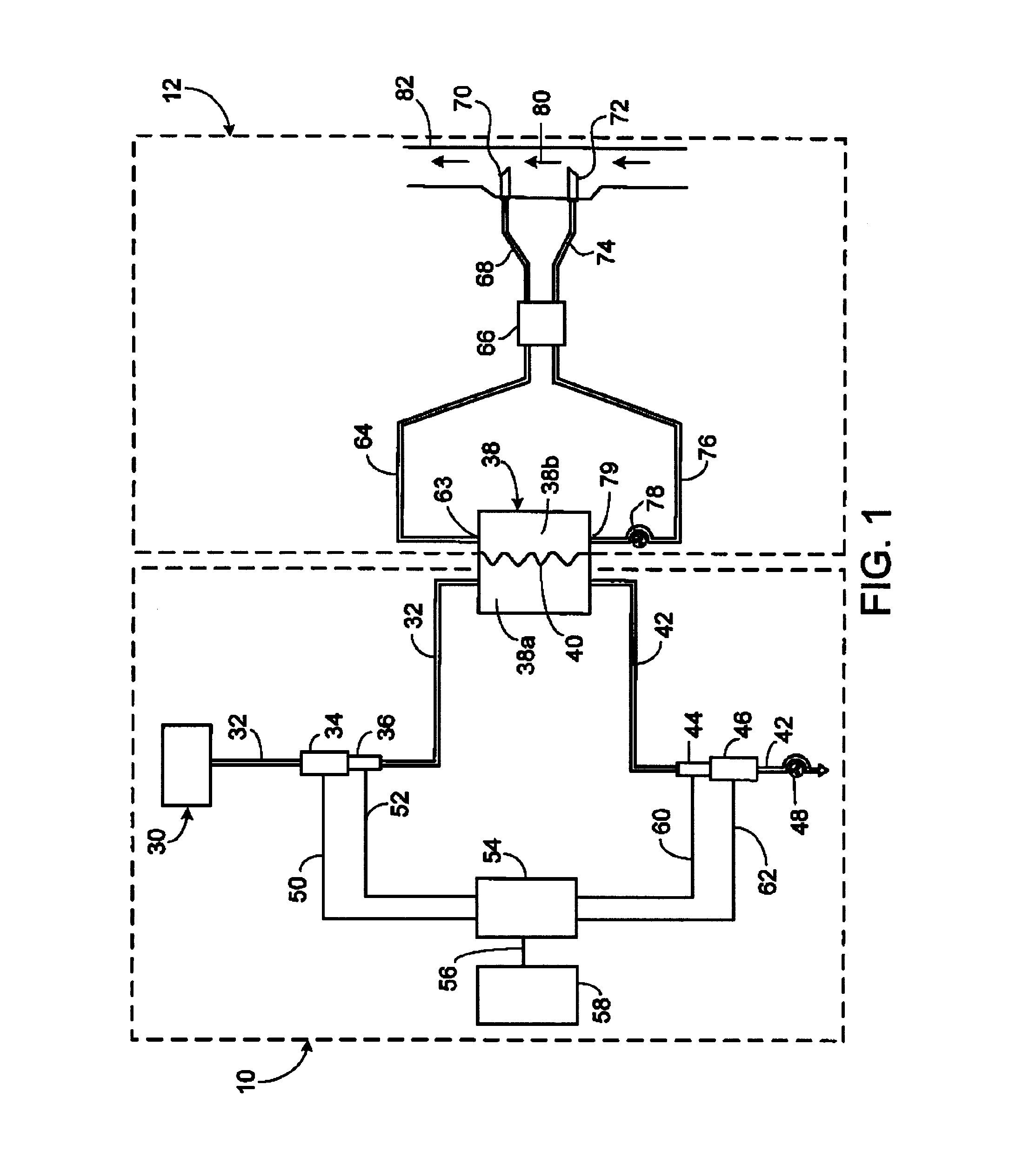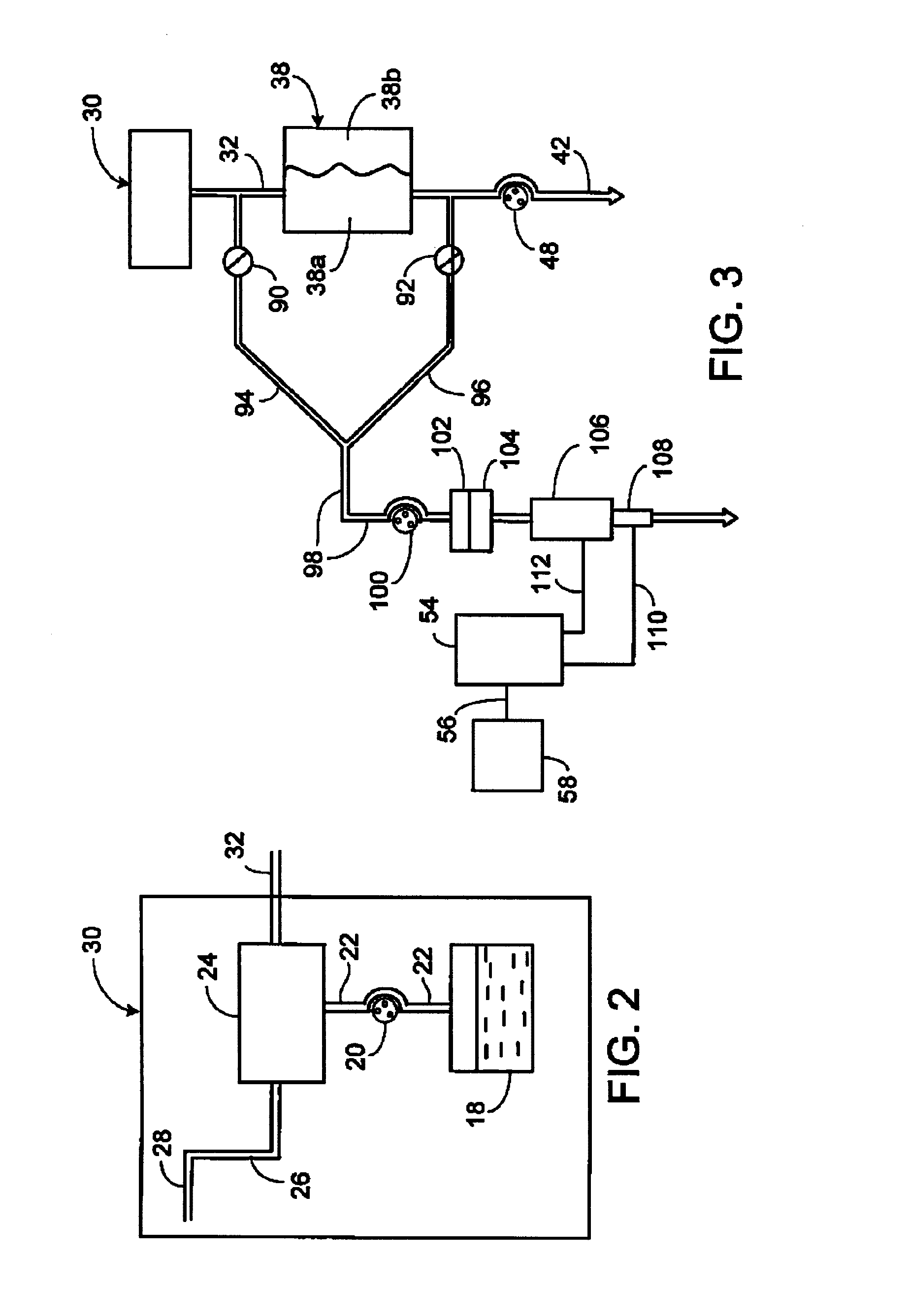Method and apparatus for determining hemodialysis parameters
- Summary
- Abstract
- Description
- Claims
- Application Information
AI Technical Summary
Benefits of technology
Problems solved by technology
Method used
Image
Examples
Embodiment Construction
Apparatus for Automated Determination of Hemodialysis Parameters
[0055]Aspects of the current dialysis apparatus are illustrated in FIG. 1. In its most general form, the dialysis apparatus includes a dialysate side 10 and a blood side 12. More specifically, the dialysate side 10 of the dialysis apparatus comprises: a dialysis solution source 30; the dialysis solution side 38a of a dialyzer 38; a dialysis solution line comprising a dialysis solution inlet line 32 and a dialysis solution outlet line 42; and a pump 48 for drawing dialysis fluid through the dialyzer 38. The blood side 12 of the dialysis apparatus comprises: an arterial line 76, a venous line 64, the blood side 38b of the dialyzer 38; a pump 78 for drawing blood through the arterial line 76, into the dialyzer 38 and finally into the venous line 64; and a fluid conduit set 66 which facilitates the reconfiguring of the arterial and venous lines 76, 64 between a first and second orientation.
[0056]The dialysis solution source...
PUM
| Property | Measurement | Unit |
|---|---|---|
| Electrical conductivity | aaaaa | aaaaa |
| Flow rate | aaaaa | aaaaa |
| Concentration | aaaaa | aaaaa |
Abstract
Description
Claims
Application Information
 Login to View More
Login to View More - R&D
- Intellectual Property
- Life Sciences
- Materials
- Tech Scout
- Unparalleled Data Quality
- Higher Quality Content
- 60% Fewer Hallucinations
Browse by: Latest US Patents, China's latest patents, Technical Efficacy Thesaurus, Application Domain, Technology Topic, Popular Technical Reports.
© 2025 PatSnap. All rights reserved.Legal|Privacy policy|Modern Slavery Act Transparency Statement|Sitemap|About US| Contact US: help@patsnap.com



